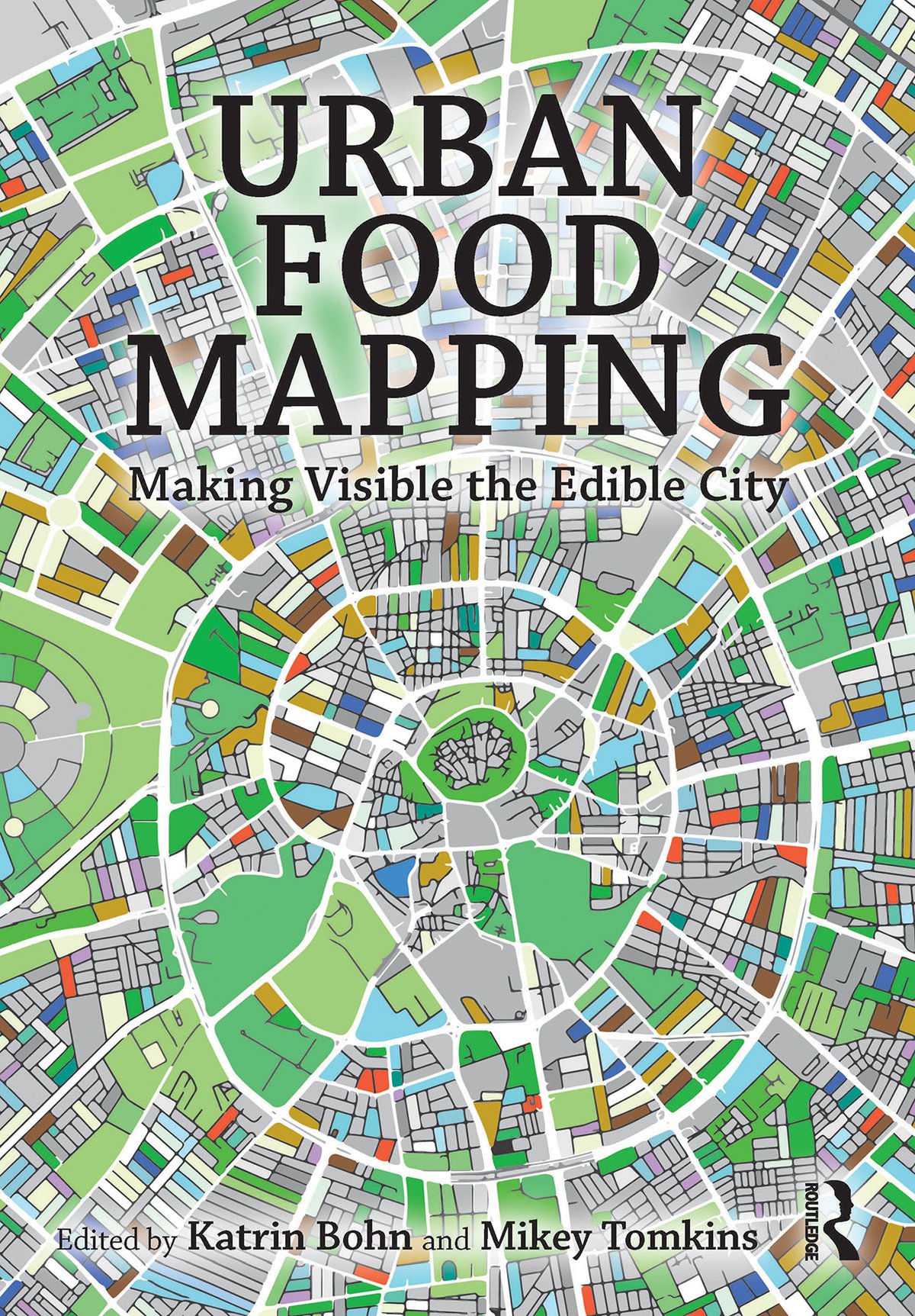2023-Oct-31 : Coming soon: The Urban Food Mapping book
We are pleased to announce that the book Urban Food Mapping: Making visible the Edible City, edited by Katrin Bohn and Mikey Tomkins will publish soon. This month, Mikey and Katrin, supported by the editorial board and all contributors, reviewed the draft proofs, and they look great!
Richly explored, using over 200 mapping images in 25 selected chapters, this book identifies urban food mapping as a distinct activity and area of research that enables a more nuanced way of understanding the multiple issues facing contemporary urbanism and the manyfold roles food spaces play within it. The authors of this multidisciplinary volume extend their approaches to place making, storytelling, in-depth observation and imagining liveable futures and engagement around food systems, thereby providing a comprehensive picture of our daily food flows and intrastructures.
Richly explored, using over 200 mapping images in 25 selected chapters, this book identifies urban food mapping as a distinct activity and area of research that enables a more nuanced way of understanding the multiple issues facing contemporary urbanism and the manyfold roles food spaces play within it. The authors of this multidisciplinary volume extend their approaches to place making, storytelling, in-depth observation and imagining liveable futures and engagement around food systems, thereby providing a comprehensive picture of our daily food flows and intrastructures.

Draft book cover for the Urban Food Mapping book. (image: Mikey Tomkins and Routledge 2023)
This first book to systematise urban food mapping showcases and bridges disciplinary boundaries to make theoretical concepts as well as practical experiences and issues accessible and attractive to a wide audience, from the activist to the academic, the professional and the amateur. It will be of interest to those involved in the all-important work around food cultures, food security, urban agriculture, land rights, environmental planning and design who wish to create a more beautiful, equitable and sustainable urban environment.
The book is divided into 5 sections, which, according to the editors, constitute the five themes that urban food mappers typically investigate when questioned “what” is being mapped:
FOOD GROWING SITES, FOOD SYSTEM ACTIVITIES, FOOD STAKEHOLDERS, FOOD PRODUCE AND CULTURES and FOOD NETWORKS AND RESOURCES.
Each theme is represented through five chapters by selected authors providing multidisciplinary approaches to that theme. The selection of contributors is based on the conference panel Mapping the Edible City at the 2020 international conference Anthropology and Geography: Dialogues Past, Present and Future, convened by Ferne Edwards, Katrin Bohn and André Viljoen.
The book is divided into 5 sections, which, according to the editors, constitute the five themes that urban food mappers typically investigate when questioned “what” is being mapped:
FOOD GROWING SITES, FOOD SYSTEM ACTIVITIES, FOOD STAKEHOLDERS, FOOD PRODUCE AND CULTURES and FOOD NETWORKS AND RESOURCES.
Each theme is represented through five chapters by selected authors providing multidisciplinary approaches to that theme. The selection of contributors is based on the conference panel Mapping the Edible City at the 2020 international conference Anthropology and Geography: Dialogues Past, Present and Future, convened by Ferne Edwards, Katrin Bohn and André Viljoen.
For more information on the Urban Food Mapping book please see here.
For information on Katrin’s co-editor Dr. Mikey Tomkins see here.
For an overview of all our books see this publications list.
To keep up to date with the project's development see our blog Productive Urban Landscapes.
For information on Katrin’s co-editor Dr. Mikey Tomkins see here.
For an overview of all our books see this publications list.
To keep up to date with the project's development see our blog Productive Urban Landscapes.










